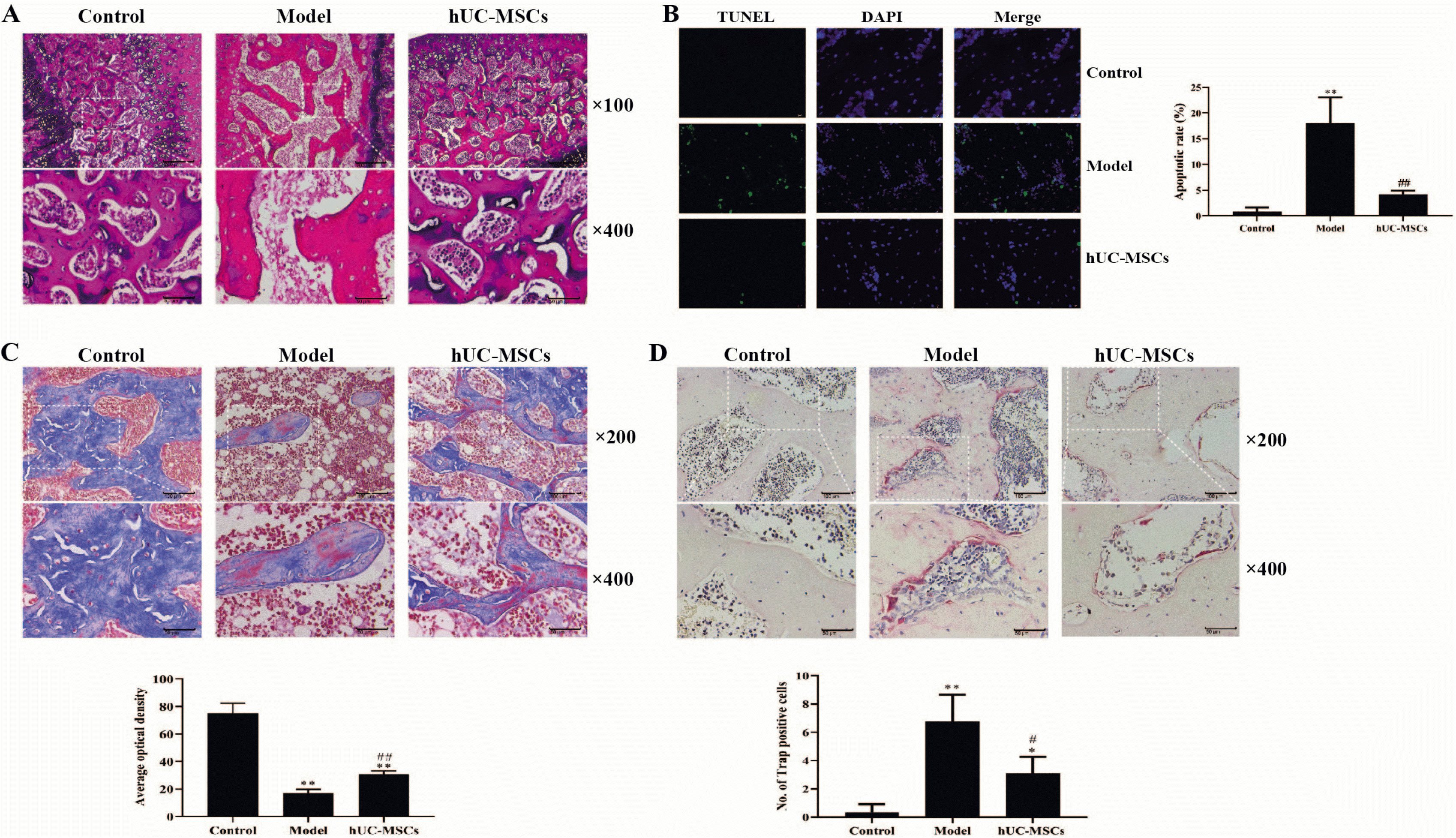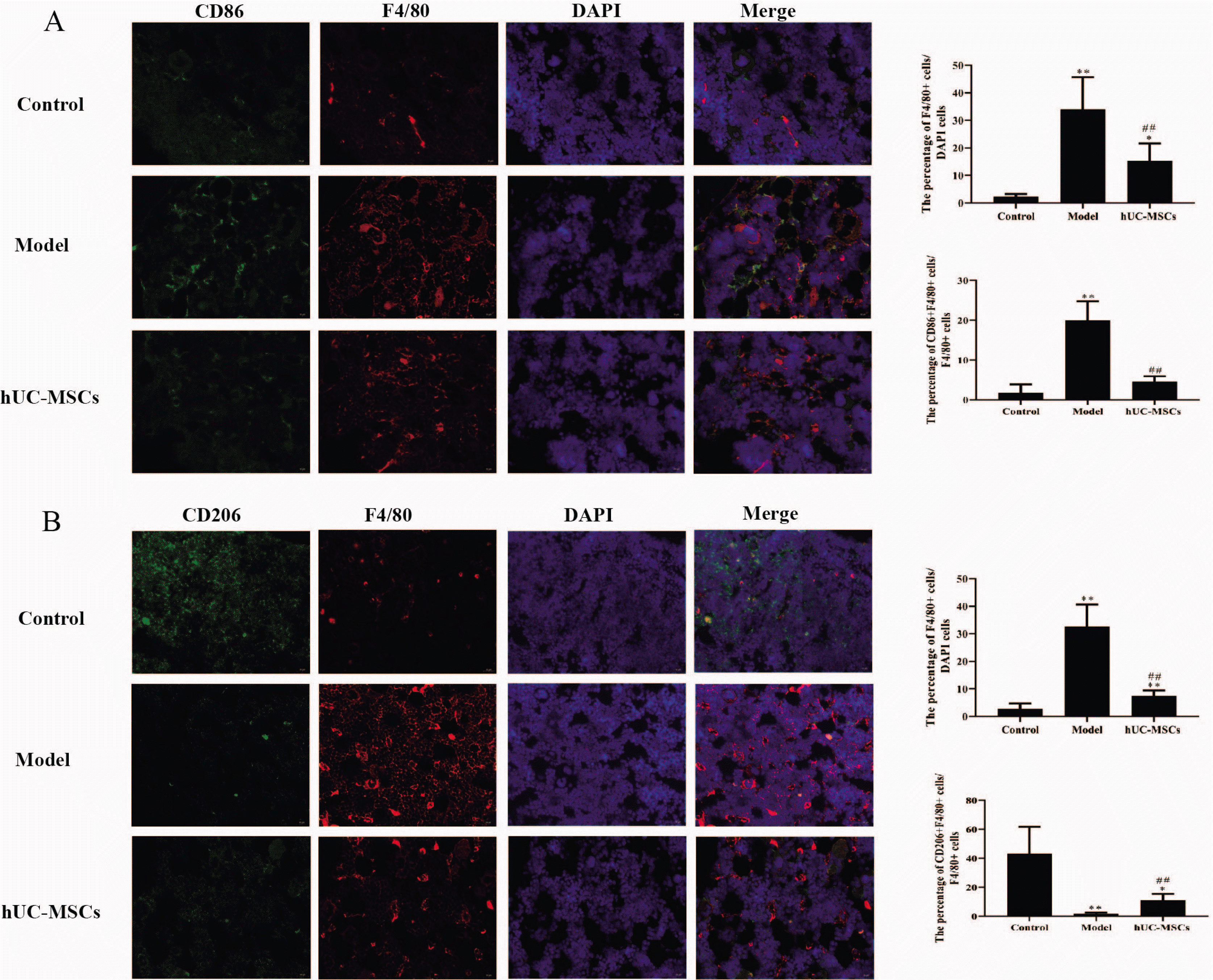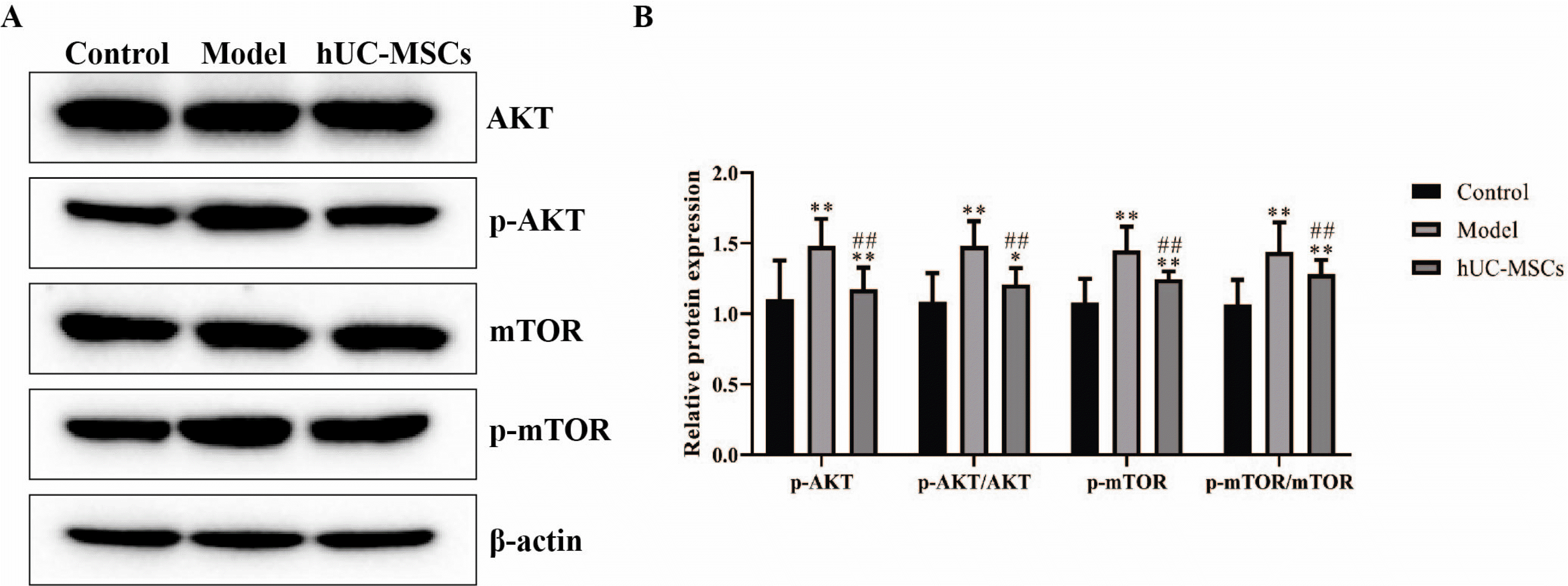1. Zhao D, Zhang F, Wang B, Liu B, Li L, Kim SY, Goodman SB, Hernigou P, Cui Q, Lineaweaver WC, Xu J, Drescher WR, Qin L. 2020; Guidelines for clinical diagnosis and treatment of osteonecrosis of the femoral head in adults (2019 version). J Orthop Translat. 21:100–110. DOI:
10.1016/j.jot.2019.12.004. PMID:
32309135. PMCID:
PMC7152793.

2. Tan G, Kang PD, Pei FX. 2012; Glucocorticoids affect the metabolism of bone marrow stromal cells and lead to osteonecrosis of the femoral head: a review. Chin Med J (Engl). 125:134–139. DOI:
10.3901/JME.2012.14.134. PMID:
22340480.
4. Pan TT, Pan F, Gao W, Hu SS, Wang D. 2021; Involvement of macrophages and spinal microglia in osteoarthritis pain. Curr Rheumatol Rep. 23:29. DOI:
10.1007/s11926-021-00997-w. PMID:
33893883.

6. Chen G, Ni Y, Nagata N, Zhuge F, Xu L, Nagashimada M, Yamamoto S, Ushida Y, Fuke N, Suganuma H, Kaneko S, Ota T. 2019; Lycopene alleviates obesity-induced inflammation and insulin resistance by regulating M1/M2 status of macrophages. Mol Nutr Food Res. 63:e1900602. DOI:
10.1002/mnfr.201900602. PMID:
31408586.

7. Zhou X, Li W, Wang S, Zhang P, Wang Q, Xiao J, Zhang C, Zheng X, Xu X, Xue S, Hui L, Ji H, Wei B, Wang H. 2019; YAP aggravates inflammatory bowel disease by regulating M1/M2 macrophage polarization and gut microbial homeostasis. Cell Rep. 27:1176–1189.e5. DOI:
10.1016/j.celrep.2019.03.028. PMID:
31018132.

8. Chen S, Lu Z, Wang F, Wang Y. 2018; Cathelicidin-WA polarizes E. coli K88-induced M1 macrophage to M2-like macrophage in RAW264.7 cells. Int Immunopharmacol. 54:52–59. DOI:
10.1016/j.intimp.2017.10.013. PMID:
29101873.

10. Weinstein RS, Nicholas RW, Manolagas SC. 2000; Apoptosis of osteocytes in glucocorticoid-induced osteonecrosis of the hip. J Clin Endocrinol Metab. 85:2907–2912. DOI:
10.1210/jc.85.8.2907. PMID:
10946902.

11. Calder JD, Buttery L, Revell PA, Pearse M, Polak JM. 2004; Apoptosis--a significant cause of bone cell death in osteonecrosis of the femoral head. J Bone Joint Surg Br. 86:1209–1213. DOI:
10.1302/0301-620X.86B8.14834. PMID:
15568539.
12. Lim JY, Jeong CH, Jun JA, Kim SM, Ryu CH, Hou Y, Oh W, Chang JW, Jeun SS. 2011; Therapeutic effects of human umbilical cord blood-derived mesenchymal stem cells after intrathecal administration by lumbar puncture in a rat model of cerebral ischemia. Stem Cell Res Ther. 2:38. DOI:
10.1186/scrt79. PMID:
21939558. PMCID:
PMC3308035.

13. Yang C, Wang G, Ma F, Yu B, Chen F, Yang J, Feng J, Wang Q. 2018; Repeated injections of human umbilical cord blood-derived mesenchymal stem cells significantly promotes functional recovery in rabbits with spinal cord injury of two noncontinuous segments. Stem Cell Res Ther. 9:136. DOI:
10.1186/s13287-018-0879-0. PMID:
29751769. PMCID:
PMC5948759.

14. Ma J, Liu N, Yi B, Zhang X, Gao BB, Zhang Y, Xu R, Li X, Dai Y. 2015; Transplanted hUCB-MSCs migrated to the damaged area by SDF-1/CXCR4 signaling to promote functional recovery after traumatic brain injury in rats. Neurol Res. 37:50–56. DOI:
10.1179/1743132814Y.0000000399. PMID:
24919714.

15. Peng Y, Pan W, Ou Y, Xu W, Kaelber S, Borlongan CV, Sun M, Yu G. 2016; Extracardiac-lodged mesenchymal stromal cells propel an inflammatory response against myocardial infarction via paracrine effects. Cell Transplant. 25:929–935. DOI:
10.3727/096368915X689758. PMID:
26498018.

16. Bernardo ME, Fibbe WE. 2013; Mesenchymal stromal cells: sensors and switchers of inflammation. Cell Stem Cell. 13:392–402. DOI:
10.1016/j.stem.2013.09.006. PMID:
24094322.

17. Peng Y, Chen B, Zhao J, Peng Z, Xu W, Yu G. 2019; Effect of intravenous transplantation of hUCB-MSCs on M1/M2 subtype conversion in monocyte/macrophages of AMI mice. Biomed Pharmacother. 111:624–630. DOI:
10.1016/j.biopha.2018.12.095. PMID:
30611986.

18. Vergadi E, Ieronymaki E, Lyroni K, Vaporidi K, Tsatsanis C. 2017; Akt signaling pathway in macrophage activation and M1/M2 polarization. J Immunol. 198:1006–1014. DOI:
10.4049/jimmunol.1601515. PMID:
28115590.

20. Mont MA, Cherian JJ, Sierra RJ, Jones LC, Lieberman JR. 2015; Nontraumatic osteonecrosis of the femoral head: where do we stand today? A ten-year update. J Bone Joint Surg Am. 97:1604–1627. DOI:
10.2106/JBJS.O.00071. PMID:
26446969.
22. Nie Z, Chen S, Peng H. 2019; Glucocorticoid induces osteonecrosis of the femoral head in rats through GSK3β-mediated osteoblast apoptosis. Biochem Biophys Res Commun. 511:693–699. DOI:
10.1016/j.bbrc.2019.02.118. PMID:
30827503.

23. Peng P, Nie Z, Sun F, Peng H. 2021; Glucocorticoids induce femoral head necrosis in rats through the ROS/JNK/c-Jun pathway. FEBS Open Bio. 11:312–321. DOI:
10.1002/2211-5463.13037. PMID:
33190410. PMCID:
PMC7780117.

24. Chen M, Xiang Z, Cai J. 2013; The anti-apoptotic and neuro-protective effects of human umbilical cord blood mesenchymal stem cells (hUCB-MSCs) on acute optic nerve injury is transient. Brain Res. 1532:63–75. DOI:
10.1016/j.brainres.2013.07.037. PMID:
23933426.

25. Busillo JM, Cidlowski JA. 2013; The five Rs of glucocorticoid action during inflammation: ready, reinforce, repress, resolve, and restore. Trends Endocrinol Metab. 24:109–119. DOI:
10.1016/j.tem.2012.11.005. PMID:
23312823. PMCID:
PMC3667973.

26. Wu X, Feng X, He Y, Gao Y, Yang S, Shao Z, Yang C, Wang H, Ye Z. 2016; IL-4 administration exerts preventive effects via suppression of underlying inflammation and TNF-α-induced apoptosis in steroid-induced osteonecrosis. Osteoporos Int. 27:1827–1837. DOI:
10.1007/s00198-015-3474-6. PMID:
26753542.

27. Okazaki S, Nishitani Y, Nagoya S, Kaya M, Yamashita T, Matsumoto H. 2009; Femoral head osteonecrosis can be caused by disruption of the systemic immune response via the toll-like receptor 4 signalling pathway. Rheumatology (Oxford). 48:227–232. DOI:
10.1093/rheumatology/ken462. PMID:
19129349.

28. Austyn JM, Gordon S. 1981; F4/80, a monoclonal antibody directed specifically against the mouse macrophage. Eur J Immunol. 11:805–815. DOI:
10.1002/eji.1830111013. PMID:
7308288.

29. Yin Y, Hao H, Cheng Y, Zang L, Liu J, Gao J, Xue J, Xie Z, Zhang Q, Han W, Mu Y. 2018; Human umbilical cord-derived mesenchymal stem cells direct macrophage polarization to alleviate pancreatic islets dysfunction in type 2 diabetic mice. Cell Death Dis. 9:760. DOI:
10.1038/s41419-018-0801-9. PMID:
29988034. PMCID:
PMC6037817.

30. Lu X, Li N, Zhao L, Guo D, Yi H, Yang L, Liu X, Sun D, Nian H, Wei R. 2020; Human umbilical cord mesenchymal stem cells alleviate ongoing autoimmune dacryoadenitis in rabbits via polarizing macrophages into an anti-inflammatory phenotype. Exp Eye Res. 191:107905. DOI:
10.1016/j.exer.2019.107905. PMID:
31891674. PMCID:
PMC8612174.

31. Ma C, Zhu L, Wang J, He H, Chang X, Gao J, Shumin W, Yan T. 2015; Anti-inflammatory effects of water extract of Taraxacum mongolicum hand.-Mazz on lipopolysacchari-de-induced inflammation in acute lung injury by suppressing PI3K/Akt/mTOR signaling pathway. J Ethnopharmacol. 168:349–355. DOI:
10.1016/j.jep.2015.03.068. PMID:
25861954.

32. Banerjee N, Kim H, Talcott S, Mertens-Talcott S. 2013; Pomegranate polyphenolics suppressed azoxymethane-induced colorectal aberrant crypt foci and inflammation: possible role of miR-126/VCAM-1 and miR-126/PI3K/AKT/mTOR. Carci-nogenesis. 34:2814–2822. DOI:
10.1093/carcin/bgt295. PMID:
23996930.

33. Zhou J, Zhang A, Fan L. 2020; HSPA12B secreted by tumor-as-sociated endothelial cells might induce M2 polarization of macrophages via activating PI3K/Akt/mTOR signaling. Onco Targets Ther. 13:9103–9111. DOI:
10.2147/OTT.S254985. PMID:
32982299. PMCID:
PMC7494226.
34. Wei Y, Liang M, Xiong L, Su N, Gao X, Jiang Z. 2021; PD-L1 induces macrophage polarization toward the M2 phenotype via Erk/Akt/mTOR. Exp Cell Res. 402:112575. DOI:
10.1016/j.yexcr.2021.112575. PMID:
33771483.

35. Zhao F, Qin Y, Yang J, Liu P, He X, Zhou L, Zhou S, Gui L, Zhang H, Wang X, Jiang S, Zhong Q, Zhou Y, Shi Y. 2020; R-CHOP immunochemotherapy plus surgery is associated with a superior prognosis in Chinese primary intestinal diffuse large B-cell lymphoma. Asia Pac J Clin Oncol. 16:385–391. DOI:
10.1111/ajco.13396. PMID:
32779387.

36. Tang J, Yu H, Wang Y, Duan G, Wang B, Li W, Zhu Z. 2021; miR-27a promotes osteogenic differentiation in glucocorticoid-treated human bone marrow mesenchymal stem cells by targeting PI3K. J Mol Histol. 52:279–288. DOI:
10.1007/s10735-020-09947-9. PMID:
33532936.








 PDF
PDF Citation
Citation Print
Print



 XML Download
XML Download